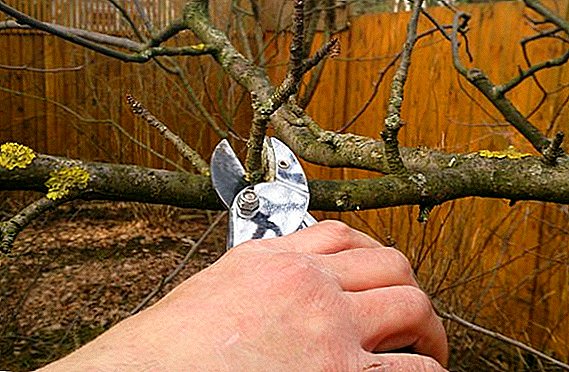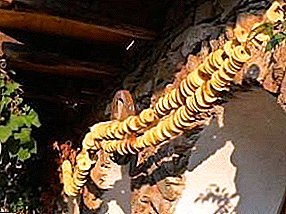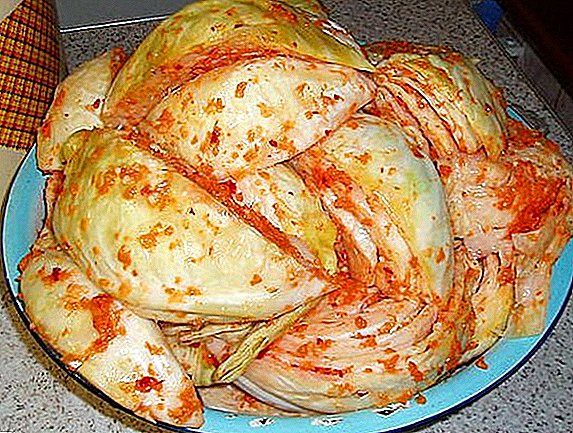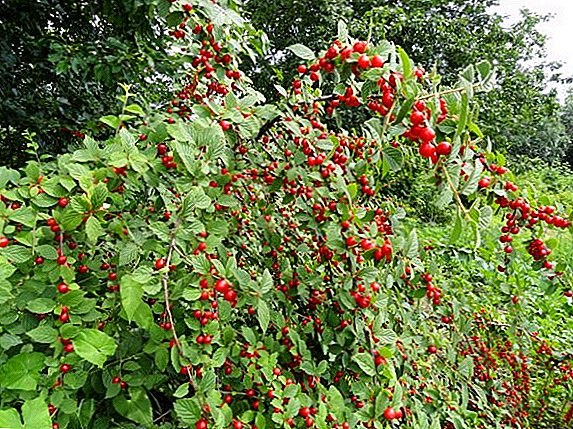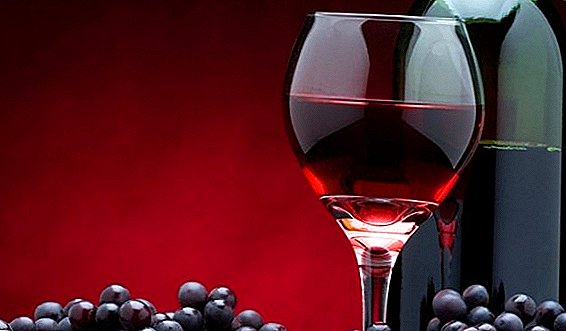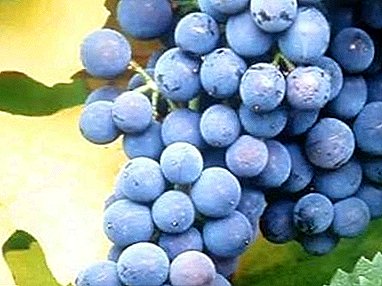
In our article we want to tell you about one of the popular grape varieties called Golubok.
It is appreciated by many gardeners for good taste, unpretentious care and aesthetic appearance.
What kind is it?
Golubok is a technical grape variety with early ripening of berries. In the southern strip, the crop can be removed at 130 days after the growing season. In our lane longer. Due to the special taste of the berries you can make a wonderful homemade wine.
Early ripening varieties also include Pleven, Present Nesvetaya, Lia and Muromets.
Recently, many lovers of quality wine are beginning to give preference to this particular variety.
Golubok grapes: description of the variety
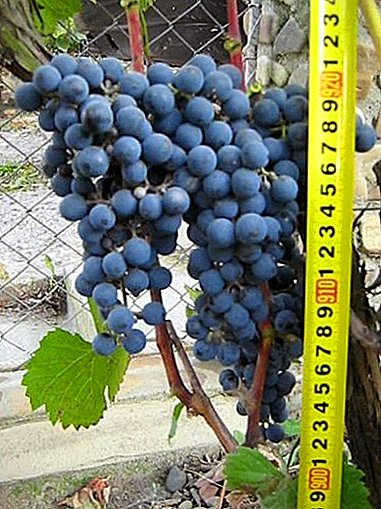 Grape bushes are medium tall, not tall, with strong branches and a fairly massive trunk;
Grape bushes are medium tall, not tall, with strong branches and a fairly massive trunk;- The leaves are small, green, three-lobed, rounded, dense, pubescent. Fresh leaves are light green with a yellowish tint, reddish border.
The teeth on the ends of the blades are triangular. In the fall, grapes become a real decoration of the garden. Its dense foliage takes on a beautiful wine color;
- Fresh shoots heavily pubescent, with a green crown. Annual shoots become brown with reddish knots;
- Flowers bisexual. Blooms profuse and pronounced aroma;
- The grape cluster is average, about 15-16 cm. In length and 10 cm in width. Vine conical (or cylindro-conical) shape, medium density, may be slightly loose. The leg of the bunch is about 4 cm. The weight is not big - 100-120 grams;
- The berries are small, rounded, 1.5 cm in diameter, blue-black in color with a waxy coating, each 1-2 grams. The skin is thin. The flesh is fleshy, juicy, the juice is saturated, ruby. The taste of berries is soft, sweet with sour notes.
Among sredneroslyh varieties should pay attention to Lydia, Ruby anniversary and Pinot Noir.
A photo
Photo grapes "Dove":




Breeding history and breeding region
The Golubok grape is a complex hybrid, which was obtained in 1958 at the UNIIViV them. V.Ye. Tairov. The variety appeared due to pollination from 4 different varieties: Northern, Early Odessa, Forty Years of October and No. 1-17-54.
In turn, grape number 1-17-54 is a mixture of Cabernet Sauvignon and Alicante Boucher. The work was carried out by Russian and Ukrainian breeders: Ayvazyan P.K., Ablyazova A.P., Tulaeva M.I., Samborskaya A.K., Dokuchaeva E.N., Meleshko L.F.
Golubok successfully passed the tests and from 1981 he was zoned in the Ukrainian SSR, and in 1982 in the Kherson and Odessa regions, where he remains enthusiastic to this day. Less often it is grown on the territory of Moldova by Belarus and Russia.
The hybrid varieties also include Citron Magaracha, Buffet and Timur.
Bush care
- With regular proper care, the bushes will produce abundant annual crops. According to Tairov V.E. on average, it is 114-115 c / ha. Among the high-yielding varieties, the Anniversary of Kherson Summer Resident, the Gift of Magarach and Rkatsiteli are worth noting.
- Winter hardiness varieties high. Bushes can withstand temperatures up to -23 -26 degrees. This figure is even higher than many European varieties.A gardener needs to remember that grapes are a very thermophilic plant. In our climatic zone it is recommended to grow it as a covering culture.
Shelter is better to choose full. With partial shelter bushes can not survive because of the sudden changes in temperature in the autumn and winter. The Beauty of the North, Super Extra and Pink Flamingo are also very cold resistant.
- When forming bushes, it should be remembered that the average load is no more than 40-45 eyes.
Many people mistakenly seek to overload the bushes in order to get more yield. The plant will not withstand the load, the berries will be too much and they will not be able to fully mature. In addition, the branches may simply not stand and break under the weight of bunches;
- Please note that the Dove loves good watering and is responsive to dressing.
Dry weather often leads to a decrease in juice content up to 70%. Fertilize the plant several times per season, water it often and plentifully, regularly loosen the ground around the bushes. This will promote better respiration of the root system and help saturate the roots with moisture.

Diseases and pests
Common diseases (mildew, oidium, gray mold) The dove is rarely affected. To defeat the root phylloxera bushes are tolerant.
The gardener should definitely carry out preventive measures to prevent infection by viral diseases, to reduce the risk of attack of pests.
- After harvesting before the onset of cold weather, the grapes should be cut. In the spring, be sure to remove old, dry, broken branches before bud break. The gardener should be aware that during pruning, the vine is shortened at the rate of 6-8 eyes;
- For prophylactic purposes, it is recommended to carry out treatment with special chemicals;
- It is necessary to collect the fallen berries and leaves under the bushes in time and destroy them;
- Many do not pay enough attention to the protection of grapes from bees and wasps. It was found that wasps can cause much more damage to the crop than locusts or diseases. You can fight with wasps with the help of spaced baits, traps, destruction of nests, chemical treatment.
Remember that prevention is also needed against diseases such as anthracnose, chlorosis, bacteriosis, rubella and bacterial cancer. In time spent events will help to secure the plants.
What do gardeners like?
 Dove is considered one of the most popular technical grape varieties.
Dove is considered one of the most popular technical grape varieties.
To technical varieties belong and Levokumsky, Bianca and August.
It is valued for its frost resistance, immunity from disease, not difficult care and good taste, thanks to which you can make excellent homemade wine.
With good care, the Dove will become a real decoration of the garden and will delight with abundant annual crops.
Description of the technical characteristics of the grape variety "Dove" and the possibility of using it in the production of wine are discussed in the following short video:


 Grape bushes are medium tall, not tall, with strong branches and a fairly massive trunk;
Grape bushes are medium tall, not tall, with strong branches and a fairly massive trunk;
